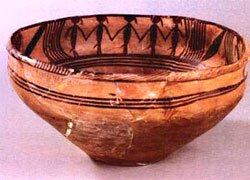Yangtze River Crafts
Longest river of Asia and China, Yangtze River is believed to be the cradle of ancient civilizations. Million years since then, Yangtze River is today the home to a large population of the Chinese people thanks to its large scale spaces and its incredibly fertile land. Yangtze, the mightiest Chinese River, show harmonious development of culture with nature represented in form of crafts. Some of the most interesting handmade artifacts and treasures have been found in Yangtze River basin.
Carvings
 Carving in Three Gorges Area along Yangtze River is an art that developed many years ago. Carvings made were used to decorate daily use articles, furniture and buildings which came in different forms such as root carving, bamboo carving, stone carving and wood carving. Wood carving is majorly applied in articles, buildings and religious pieces. Yangtze River buildings all have admirable wood carvings on their doors, posts, windows, balusters and girders.
Carving in Three Gorges Area along Yangtze River is an art that developed many years ago. Carvings made were used to decorate daily use articles, furniture and buildings which came in different forms such as root carving, bamboo carving, stone carving and wood carving. Wood carving is majorly applied in articles, buildings and religious pieces. Yangtze River buildings all have admirable wood carvings on their doors, posts, windows, balusters and girders.
There are also carvings on crutches, beds, tables and chairs. Building carved pictures are majorly figures, grass and flowers and sometimes on rare beasts. Others have ‘Shou’, Chinese character carved on them to mean longevity. Stone carvings can be seen mostly on tombstones, paifang/ arches and ancestral temples. The bluestone material is carved with various pictures like lelestial beings, beasts and flowers. Other sculptures are shaped like two lions fighting for a ball or a winding dragon.
Painted Pottery
 Yangtze River is also famous for its painted pottery crafts. The artisans use local yellow mud for their material to make the painted highly valued pottery. Some of the representatives of painted pottery works include the Color Glazed Mural, Plate with Cat, Yiling Horses Series, Zhaojun Tea sets and Xiling Stationery.
Yangtze River is also famous for its painted pottery crafts. The artisans use local yellow mud for their material to make the painted highly valued pottery. Some of the representatives of painted pottery works include the Color Glazed Mural, Plate with Cat, Yiling Horses Series, Zhaojun Tea sets and Xiling Stationery.
Most people favor the Yiling Horses Series when looking for pottery works to put as display for their houses. These potteries feature different configurations of horses and have a dazzling glaze. The plates used are 30 cm wide and the middle has a painting of a white cat. The plate has a good color and the cat appears lifelike. These plates have already been sold in other countries where they are used as domestic displays.
Zhaojun Tea Set pottery is available in twelve pieces which describe the story and history of Wang Zhaojun through characters and pieces. Most Japanese and American leaders have received Zhaojun Tea Set as a present from their Asian and Chinese counterparts.
Bonsai
Bonsai refers to a special form of craftwork where a natural scene is created in flower pots by use of stones and miniature trees. Yichang has a long historical story to tell about Bonsai. Since the era of the Qing Dynasty, most families have maintained bonsai crafts in their houses. Later, with improvement of living conditions of the people, more people have fallen in love with Bonsai.
Bonsai comes in three kinds: hanging plate bonsai, stump bonsai and rock bonsai. The local bonsai is made with local rock resources and combined with some ancient Chinese painting techniques. This creates a similar scene of the legendary Yangtze River. Making stump bonsai involves use of stump as the main material and after a long crafting process, ancient tree images appear in the pot.
Lastly, the hanging plate bonsai combines several arts including sea cutting crafts, pottery, painting and bonsai itself. This form of craft is majorly used for decoration purposes where it is hung on walls or placed on desks in offices.
Embroidery
Most women living around Yangtze River Basin still practice Embroidery even today. Embroidery has been a must practice reserved for the women since the Qing and Ming Dynasties and for years, embroidery has been used as a basis of determining the ability of a woman. Virtuous women are believed to be pros in needlework and girls are taught needlework practice in their young ages of ten years.
Embroidery works have mostly been applied in daily use articles like pouches, door curtains and bed spreads. Some works of embroidery have also been used as good luck tokens and new couples are also offered embroidery works as a gift. Deft women embroider different designs which most visitors are highly interested in.
Bamboo & straw weaved products
The Bamboo & straw weaved products are a popular way of life in Three Gorges Area of the Yangtze River. The Bamboo and woven products depict a cute combination of decoration and practicality. Most of the bamboo products are largely made using phyllostachys pubescens and fishscale bamboo. Indigenous people living along Yangtze River started by first dividing bamboo into slices and then weaving it into different articles like rain gear, hats, boxes and baskets.
Products woven from straw depict simplicity in style with different products being made from different types of straws. For instance, rushes are used to make straw mats, haulm makes sandals, straw hats, winnowing fan or baskets are made from wheat stalk. Palm leaves are easily woven to form insects like dragonflies and locusts which are a great delight to kids. Lastly, flower baskets and cushions are made using maize leaves.
Since straw craftworks are highly available, these products are a common aspect among people living along Yangtze River. In Yinchang, straw woven products are found in ‘six hundred varieties’ and are very famous.
Shipbuilding
Ancient tribes living along the Yangtze River invented the craft of building ships and boats to facilitate their transportation through the river. Later along, the ships were used for wars. The techniques of building ships were rapidly improved during autumn and spring periods. Most states along Yangtze River such as Yue, Qi, Chu and Wu engaged often in water fights. In 208 AD, the Battle of Red Cliffs took place in Yangtze River which is one of the wars that showed how ship building was an important craft when it came to fights in the Yangtze River.
The list of Yangtze River art crafts is simply endless just like the many myths and legends that developed about the region. All these depict the richness and appealing nature of the Longest and most respected River in China.
Know more about Yangtze Culture:



